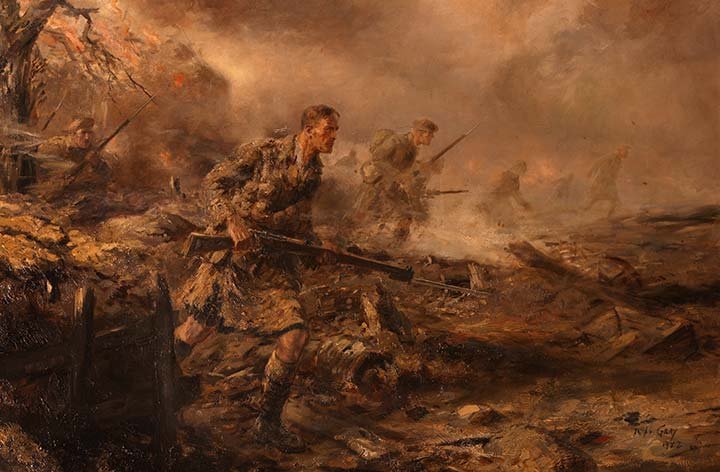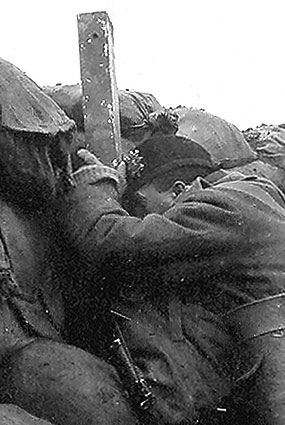Great War Dundee
This is Dundee's story of those that served in the First World War, and of the people left at home
At the Front
The words ‘At the Front’ are commonly understood to mean being on the fighting line and conjures up a sense of daily fighting and danger. Indeed a soldier’s life on active duty was dangerous but the front was more than just a single trench. Soldiers generally spent four days in the front line, four in the support trenches, followed by a period in reserve.


Being prepared for an attack was the main concern for soldiers on the front line but daily life at the front would also be filled with a variety of duties as well as the occasional moment to grab some sleep. Receiving a letter or parcel from home would always be looked forward to because as well as letters soldiers would receive treat food and extra clothes such as hand knitted woollens.
Whether defending or attacking, when battles came they were fierce with men often falling just yards from their trenches. The potential success of an attack partly relied on sheer numbers. The Battle of Loos involved thirty-six Scottish battalions and 30,000 Scots going ‘over the top’ on the morning of Saturday, 25 September 1915. Of the 20 officers and 423 men of Dundee’s Own that took part in the battle 19 officers and 230 men were lost.
It is estimated that 63% of the eligible men in Dundee joined the fight, equating to around 30,500 men. Dundee had one of the highest contribution rates of any British city. Sadly more than 4213 of those men never returned to Dundee.
Picture credits: The 4th Battalion The Black Watch in the Attack... and Keeping watch on enemy lines... courtesy of The Black Watch Museum.

